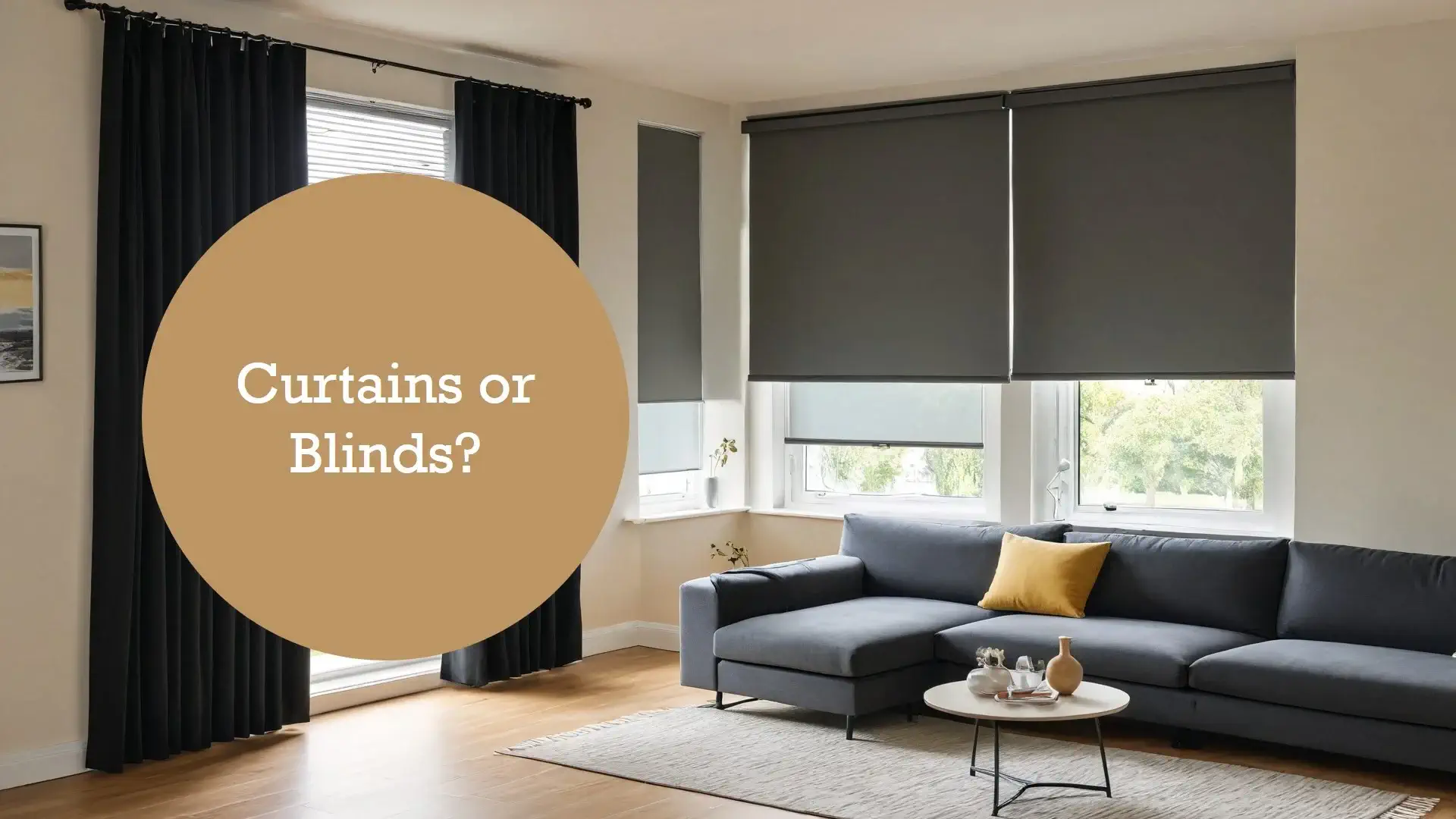
Choosing Between Curtains and Blinds: A Complete Guide for Your Home
15 November 2024
When it comes to dressing your windows, the decision between Curtains and Blinds can greatly impact your space. Both options offer unique benefits in terms of style, functionality, and price, making it important to weigh the pros and cons of each to find the perfect fit. Here’s a breakdown to help you decide between curtains and blinds for your home.
1. Aesthetic Appeal
• Curtains: Known for their elegance, curtains come in a wide range of fabrics, colors, and patterns. They add a cozy, layered look and can match nearly any decor style, from traditional to modern.
• Blinds: Offering a more minimalistic and streamlined look, blinds are ideal for contemporary spaces. They’re versatile enough to fit both minimalist and industrial styles, providing a neat and polished appearance.
2. Light Control
• Curtains: With options like sheer, blackout, and semi-transparent fabrics, curtains provide varying levels of light control. Blackout curtains are ideal for bedrooms where complete darkness is preferred.
• Blinds: Blinds often provide better precision in light control. Adjustable slats let you filter in light while maintaining privacy, making them great for spaces where light control is essential, like home offices.
3. Privacy Considerations
• Curtains: Heavier curtain fabrics provide privacy but may limit light. Sheer curtains offer light without sacrificing too much privacy, though they might not be ideal in very exposed areas.
• Blinds: With slatted blinds, you can adjust the tilt to achieve a balance between privacy and light, making them suitable for bathrooms and street-facing windows.
4. Maintenance
• Curtains: Cleaning curtains depends on the fabric type. Some require dry cleaning, while others are machine-washable. They may need regular dusting to avoid allergens.
• Blinds: Blinds are generally low maintenance and easier to clean. A simple wipe-down with a damp cloth is usually sufficient, which makes them ideal for high-traffic or dusty areas.
5. Energy Efficiency
• Curtains: Heavy or insulated curtains add a layer of warmth, reducing heat transfer. In colder climates, they can help retain heat, lowering heating costs.
• Blinds: Blinds also provide some insulation but may not be as effective as thick curtains. Cellular or honeycomb blinds, however, are designed with energy efficiency in mind.
6. Cost
• Curtains: Depending on the fabric, size, and design, curtains can be more costly, especially if custom-made. However, they’re often a long-term investment.
• Blinds: Blinds can be a more budget-friendly option, especially if you're looking to cover multiple windows. Standard blinds tend to be more affordable than custom curtains.
7. Durability
• Curtains: Curtains, especially those made from high-quality fabrics, can last many years. However, they may fade if exposed to prolonged sunlight.
• Blinds: Blinds tend to last longer without showing wear and tear, making them a good choice for high-traffic areas or homes with pets or children.
8. Installation and Customization
• Curtains: Available in a variety of lengths and widths, curtains can be customized to fit any window. Installation usually involves curtain rods, which can add to the cost.
• Blinds: Blinds are easier to install and are often custom-sized to fit windows precisely. They offer a seamless look that integrates well with modern decor.
Both curtains and blinds bring unique advantages. Curtains are excellent for adding warmth, softness, and style, while blinds are ideal for functional light control, minimal upkeep, and a sleek look. Think about your room's purpose, desired style, and practical needs to make the best choice. For more guidance or if you're interested in exploring customized options for curtains or blinds, reach out to our team—we’re here to help!